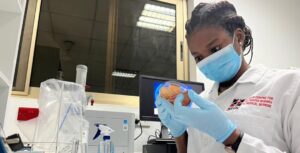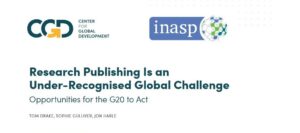
Slum children face high risk of diarrhoea in Nepal
Diarrhoea is one of the leading causes of child mortality in developing countries. Two million children die of diarrhoea in the world every year. Research published recently in the Journal of Lumbini Medical College has found that children living in the slums of Nepal’s small hill towns are at significant risk of diarrhoea.
The research article, titled Risk Factors of Diarrhoea in Children Under Five Years in Urban Slums: An Epidemiological Study, revealed that, of the 450 children under five years of age living in the slums of the Tansen municipality in the Palpa district (250 kilometres west of Nepal’s capital Kathmandu) 40% were found to have suffered from diarrhoea in the previous three months.
The research found that the risk of diarrhoea was much less for children who had been exclusively breast-fed for six months, says lead author, Dr Balakrishna Kalakheti, Associate Professor at Department of Paediatrics at Lumbini Medical College Teaching Hospital, Palpa, Nepal.Of the 181 children who had diarrhoea, 174 had not been breast-fed exclusively for more than six months while only seven had been breast-fed exclusively.
Nutrition, the source and treatment of drinking water, hand washing practice and family income were other variables related to diarrhoea in the slums. Interestingly, the research found that children drinking natural-source spring water had a lower risk of diarrhoea than children drinking water from a Government-supplied source.
According to Dr Kalakheti, nutrition had a strong impact on vulnerability to diarrhoea. “At present, the children are trapped in a cycle of malnutrition and diarrhoea,” he explains. “Children in the slums suffer from malnutrition. When they suffer from malnutrition their immunity reduces and they become prone to diarrhoea. When they suffer from diarrhoea, food absorption is affected and they cannot absorb nutrition well.”
Dr Kalakheti says that the focus should be shifted from a curative approach to a preventive approach to address this problem and more awareness-raising programmes should be organized to inform the mothers about the importance of nutrition and sanitation. “Ironically, because the mothers have to go for work, they cannot spare time to learn more about causes of diarrhoea and methods to reduce it,” he says.
The research article, Risk Factors of Diarrhoea in Children Under Five Years in Urban Slums: An Epidemiological Study, appears on the latest issue Vol 4, No 2, July-Dec 2016, page: 94-98 of the Journal of Lumbini Medical College (JLMC). The research article is available online on the NepJOL platform, which is supported by INASP and maintained by TUCL.
About the journal
The Journal of Lumbini Medical College (JLMC) is a peer-reviewed, open access, biannual scientific medical journal published in English by Lumbini Medical College in Palpa, Nepal. It covers original full research papers, short communications, critical reviews, editorial commentaries, conference summaries and book reviews of all aspects of health and diseases including clinical and experimental studies and medical education.
About NepJOL
NepJOL hosts over 115 journals published from Nepal, covering the full range of academic disciplines. The objective of NepJOL is to give greater visibility to participating journals and to the research they convey. NepJOL was initiated in June 2006 and officially launched in September 2007. It is a project supported by INASP and locally managed by Tribhuvan University Central Library. It aims to promote the awareness and use of Nepal-published journals in all disciplines by providing access to tables of contents (TOCs), abstracts and full text on the internet.
About INASP
Founded in 1992, INASP is an international development organization working with a global network of partners in Africa, Latin America and Asia. In line with the vision of research and knowledge at the heart of development, INASP works to support individuals and institutions to produce, share and use research and knowledge, which can transform lives.
INASP’s approaches are based on the core pillars of capacity development, convening, influencing and working in partnership. INASP promotes equity by actively addressing the needs of both men and women across all our work and addressing issues of power within the research and knowledge system. INASP has projects in 28 countries, supporting all aspects of research and knowledge systems, from facilitating the provision of information to researchers to helping parliamentarians and civil servants to use research and evidence in policy making.
Disclaimer: Research published in journals hosted on the NepJOL platform is selected by the journals in accordance with their own editorial processes and criteria. INASP and Tribhuvan University Central Library provide hosting and guidance on good practices but is not involved in selection of research.
For further information
Thakur Amgai, Communications Consultant, INASP
Email: tamgai@inasp.info
Dr Sangita Shrestha, Communications Officer, INASP
Email: sshrestha@inasp.info




